Five Winter Read-Alouds for the Elementary Classroom
★★★★★
 Photo by Mael BALLAND on Unsplash
Photo by Mael BALLAND on Unsplash
Winter is the perfect time to find a cozy book and snuggle down to read. In a classroom where literacy is of great importance, students always enjoy a good read from the teacher. These five books are not only winter stories but also have other literary and academic elements that you can enjoy together as a class.
The Snowy Nap
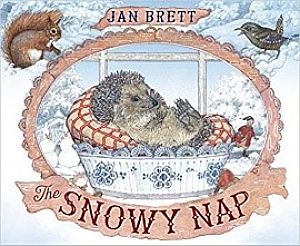 Jan Brett is a favorite author of mine. In this book, she uses animal characters to discuss the favorite aspects of winter. As the hedgehog heads toward his winter burrow to hibernate for the winter, he is reminded by his animal friends of all the things he will miss as he snores the winter away. Because it all sounds too wonderful to miss, he decides to stay awake in order to see the winter beauty.
Jan Brett is a favorite author of mine. In this book, she uses animal characters to discuss the favorite aspects of winter. As the hedgehog heads toward his winter burrow to hibernate for the winter, he is reminded by his animal friends of all the things he will miss as he snores the winter away. Because it all sounds too wonderful to miss, he decides to stay awake in order to see the winter beauty.
As you read the book, notice the pictures in the side margins. They provide the perfect opportunity to teach about foreshadowing. Authors generally use words and phrases to give you a mind-picture of what may be coming later in the story. Jan Brett takes the concept even further and gives you an image of an upcoming event. For example, on the page prior to discussing with the billy goat the merits of winter, the billy goat is pictured in a small frame in the margin of the previous page. If you find that your students enjoy this book, you may want to follow it up with another of her books, The Mitten.
Winter is Coming
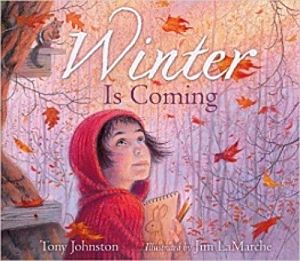 Ideally, this book would be read in the late autumn as winter approaches and your scholars start to take note of the change in weather and nature. Johnston captures the beauty of taking time to sit and observe as the season changes. On every page layout, there is an image and rhythmic text that captures an event that takes place in nature as winter approaches. Throughout the book, you will notice the observer using her journal, pencil and crayon, eyes and ears, and her binoculars to take note and record her observations in her journal.
Ideally, this book would be read in the late autumn as winter approaches and your scholars start to take note of the change in weather and nature. Johnston captures the beauty of taking time to sit and observe as the season changes. On every page layout, there is an image and rhythmic text that captures an event that takes place in nature as winter approaches. Throughout the book, you will notice the observer using her journal, pencil and crayon, eyes and ears, and her binoculars to take note and record her observations in her journal.
This book is the perfect springboard to beginning a seasonal writing project or nature journal. Since our autumn has already turned into winter right now, you could start a winter season writing project where the students document an aspect of the winter season on each page. And because winter will soon be turning into spring, you could also use this book to introduce nature journaling to your students where they take time each day to bundle up, go outside, and take note of one thing around them that is happening as spring approaches.
First Snow in the Woods
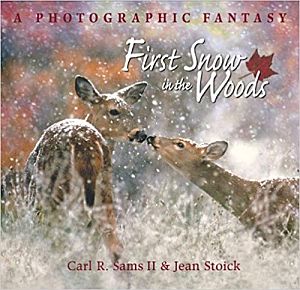 This book is composed of actual photographs that Sams and Stoick captured and combined to tell the story of snow coming to the woods. The characters of the photographs, forest animals, discuss among themselves the signs of the first snow approaching. The pictures are stunning and the authors have done a fabulous job of giving words to creatures who have no words.
This book is composed of actual photographs that Sams and Stoick captured and combined to tell the story of snow coming to the woods. The characters of the photographs, forest animals, discuss among themselves the signs of the first snow approaching. The pictures are stunning and the authors have done a fabulous job of giving words to creatures who have no words.
This is the type of book that is perfect for an early scholar to understand the concept of fantasy and fiction. Fiction and the imagination are limitless, and for many children, it is too overwhelming. But in this fantasy, the setting is ordinary. Children know these characters. The concept of seasons and certain weather patterns approaching and leaving is something they have encountered since they were infants. The only fanciful or fiction element is that of putting words to what the animals are thinking and discussing among themselves. When students are first broached with the idea of writing a fantasy, they can have a hard time knowing where to begin but after reading First Snow in the Woods and leading them through a class exercise of compiling a story about zoo animals on the first day of spring, they should be able to write their own fanciful fiction about a barn of farm animals during a thunderstorm. If you feel like you could use more fanciful fiction writing ideas, use one of their other books such as Stranger in the Forest as a springboard.
Sleep Tight Farm: A Farm Prepares for Winter
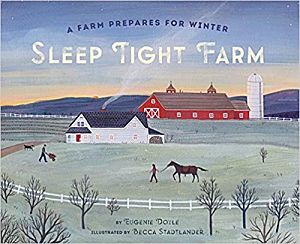 In this charming book, Doyle and Standtlander lead the reader through the preparation that a farm encounters as it readies for winter. All spring, summer, and autumn long the farm has worked to provide for the family. And now, as it enters winter, the family prepares the farm for a restful sleep. The authors not only capture the cycle of farming but also the necessity of both work and rest.
In this charming book, Doyle and Standtlander lead the reader through the preparation that a farm encounters as it readies for winter. All spring, summer, and autumn long the farm has worked to provide for the family. And now, as it enters winter, the family prepares the farm for a restful sleep. The authors not only capture the cycle of farming but also the necessity of both work and rest.
After reading this book, lead the students in a discussion about other naturally occurring cycles that God instituted. Night and day, the four seasons, the food chain, and the water cycle were all put into place by an orderly God. As a creative exercise, use this book as the launching point for either a writing or an art assignment and have the students compile a book or several pictures depicting another cycle that God ordained.
Home
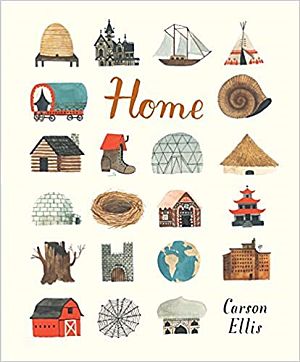 A book with detailed illustrations and few words, this book was certainly compiled by an artist. Throughout the book, you will see a variety of homes from all over the world. Because we live in the Northern Hemisphere, winter time is typically a time when your scholars begin to spend time inside their home instead of in the great outdoors. It is a time where we greatly appreciate the coziness of a lighted fireplace and warm blankets on our beds.
A book with detailed illustrations and few words, this book was certainly compiled by an artist. Throughout the book, you will see a variety of homes from all over the world. Because we live in the Northern Hemisphere, winter time is typically a time when your scholars begin to spend time inside their home instead of in the great outdoors. It is a time where we greatly appreciate the coziness of a lighted fireplace and warm blankets on our beds.
Use this book as the starting point in an art lesson. After reading the book, direct their attention back to the cover. Hold a discussion with them about each home and the homeowner such as a snail shell and snail, Native American and wigwam, and the story of the little old woman who lived in a shoe. After this discussion, allow them to create a visual of a home where the other students will guess the intended home owner.
Related Items
Leave a Reply
Feedback